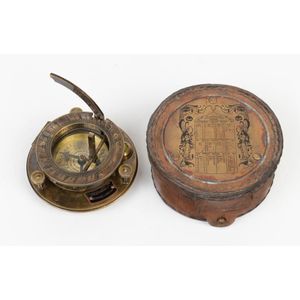
Portable Brass Compass and Sundial in Leather Box, London
A portable brass compass and sundial, by J.H. Steward, Strand London, housed in a leather box, 12 cm diameter
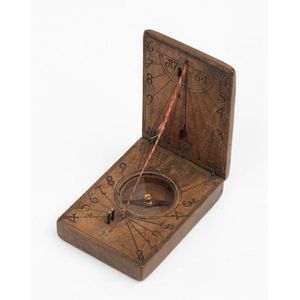
1764 Continental Wood Pocket Sundial and Compass
A carved Continental wood pocket sundial and compass, dated 1764, with precision carved numbers and a small stringline, dated to the lid interior, 1.5 cm high, 6.5 cm wide, 4.5 cm deep
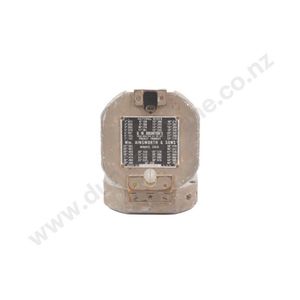
1894 Brunton Pocket Transit Compass by Ainsworth & Sons
D. W. Brunton's 1894 patent pocket Transit compass, by Wm Ainsworth & Sons, Denver, Colorado, octagonal metal case, (mirror cracked)
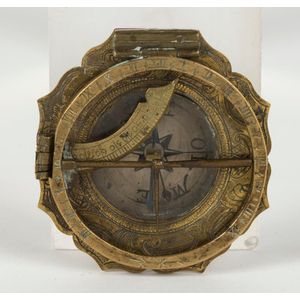
Antique German Pocket Sundial and Compass
An early 18th century German equinoctial pocket sundial and compass by Ludwig Theodor, circa 1725, 6 cm wide

19th Century Pocket Compass in Leather Pouch
An antique pocket compass in original leather pouch, 19th century, 8 cm diameter
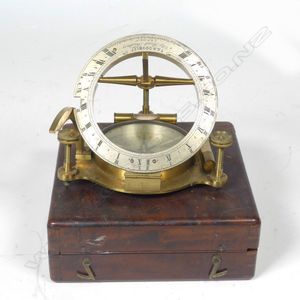
Brass Portable Sundial with Compass and Mahogany Box
An uncommon late 19th century lacquered brass portable sundial by T & H doublet, with compass plateau supported on levelling screws and pivoting chapter ring with silvered face engraved with the instrument maker's details. In mahogany box (distressed) 16…
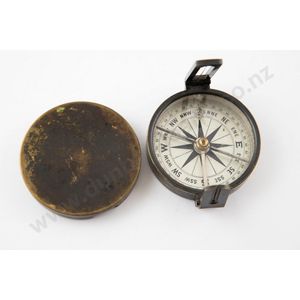
Bronzed Pocket Compass with Silverised Dial
Vintage bronzed pocket compass with silverised dial, 7 cm diam.
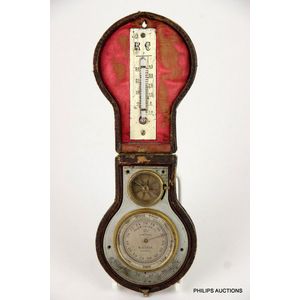
Antique Swiss Compensated Barometer in Traveling Case
An antique Swiss pocket or travelling Compensated barometer, late 19th century, with maker's mark for W.Ecker, Lucerne, in a leather bound and silk lined travelling case and comprising a barometer compass and mercury thermometer, length 8.5 cm
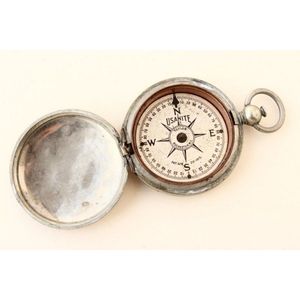
1918 American Usanite Pocket Compass
American Usanite pocket compass, c.1918, of bun form, opening to reveal compass, ipressed Eng Dept U.S.A 1918, diameter 5 cm
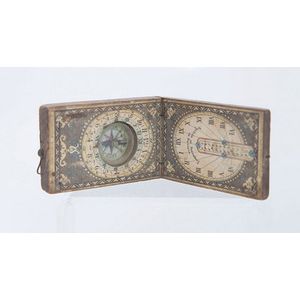
Lithographed Pocket Compass with 19th Century German Design
German 19th century pocket compass lithographed decoration on wood
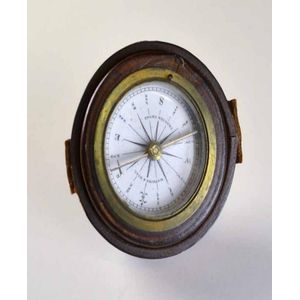
19th Century Watkins & Hill Pocket Compass with Leather Case
A Watkins & Hill Charing cross pocket compass 19th century, London. The compass has a white enamel dial inside a fitted leather case
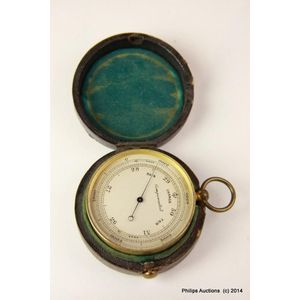
Victorian Pocket Barometer with Compass and Box
A small Victorian pocket barometer, circa 1889, in gilded brass having a cream metal dial and a compass to the reverse, and inscribed Dr J F Ruddall 24.23.89; encased in an emerald silk and velvet lined leather box. Height 3 cm. Diameter 6 cm
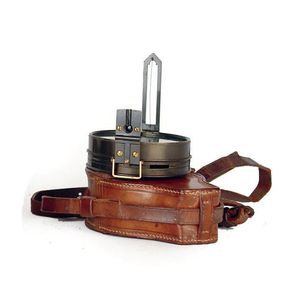
Antique Brass Pocket Compass with Leather Case
An old brass cased pocket compass, T. Peacock & Son, Auckland, N.Z. Diameter 9 cm. In original leather case
 Loading more...
Loading more...